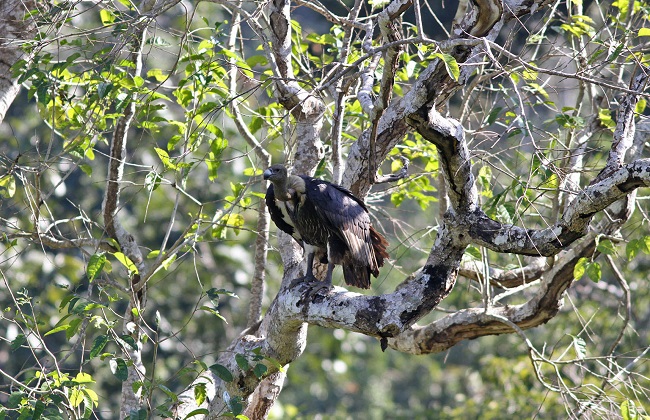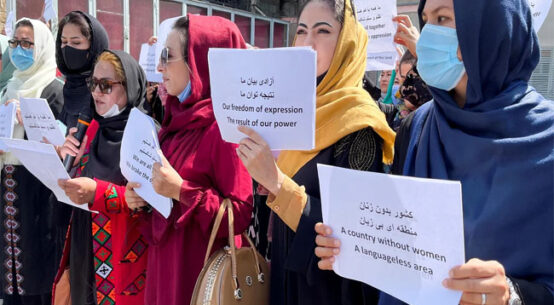
Vultures were a common sight across the Indian subcontinent until the late 1980s. But the excessive use of some veterinary drugs for cattle, which are toxic to the scavengers, and loss of habitat, led to a drastic fall in vulture numbers in the wild. By 2017, some species’ populations had fallen by 95%.
However, in Bangladesh, the populations of several vulture species have stabilized over the past few years, thanks to joint conservation efforts by the country’s forest department and the Bangladesh office of the IUCN, the global conservation authority. According to the team’s observations, the drastic decline in vulture populations has been halted in Bangladesh.
Raquibul Amin, the IUCN Bangladesh country representative, said their observations show the number of the vultures since the last census in 2015 has remained almost the same. He attributed this to the government’s timely initiatives to ban the use of harmful veterinary drugs and declare several “vulture safe zones” across the country.
Although the numbers are yet to increase to healthy figures, the plunge in population, at least, has stopped, and that’s a promising sign for the country’s wildlife conservation, said Monirul H. Khan, professor of Zoology at Jahangirnagar University. He added the current scenario indicates that, if the conservation efforts continue, the numbers could rise.
A ban on harmful painkillers for cattle
Diclofenac, an anti-inflammatory drug, was widely used to treat livestock in Bangladesh since the early 1990s. In 2003, researchers from The Peregrine Fund found that diclofenac is fatal to vultures, which don’t have the enzymes to break it down. When vultures scavenge on cattle that have been treated with diclofenac, they die within days due to kidney failure caused by the drug.
In 2010, IUCN Bangladesh suggested that the government ban the use of drugs such as diclofenac after identifying it as one of the major culprits behind the vultures’ disappearance. Bangladesh’s Ministry of Environment, Forest and Climate Change took the initiative to ban the use of diclofenac for livestock in 2011.
When a second anti-inflammatory drug called ketoprofen, also used to treat cattle, was also later identified as harmful to vultures, the Bangladesh Drug Administration moved to ban that too. In 2021, Bangladesh became the first country to ban all such harmful drugs in vulture-prone areas, such as the Sylhet Division, the greater Mymensingh region, and some parts the Sundarbans mangroves.
Of the seven species of vultures once found in Bangladesh, the red-headed vulture (Sarcogyps calvus) is now locally extinct in the country. Two other species — the white-rumped (Gyps bengalensis) and the slender-billed (Gyps tenuirostris) — are critically endangered both locally and globally. The remaining four species are migratory in Bangladesh.
Vulture safe zones and other initiatives
In 2015, the Bangladesh Forest Department and the IUCN put together the National Vulture Conservation Action Plan 2016-2025 as part of the wider efforts to protect the threatened vulture species.
Abu Naser Mohsin Hossain, divisional forest officer with the Bangladesh Forest Department, said the proposed action plan directs the authorities to take structured actions like vulture safe zone management, implement transboundary initiatives, and ban the use of livestock medicines harmful to the scavengers.
“We have been trying to implement all the actions mentioned in the action plan to get back the species in the wild again,” he said.
Under the action plan, the forest ministry has established two vulture safe zones in the Sylhet and Khulna regions, spanning 9,660 and 27,700 square kilometers (3,730 and 10,700 square miles) respectively. These regions, known for their comparatively higher white-rumped vulture populations, have two large vulture breeding colonies. These vulture safe zones are free of diclofenac and ketoprofen.
A.B.M. Sarowar Alam, project manager at IUCN Bangladesh, said the conservation initiatives are inclusive of the local communities around the breeding colonies. Members of these communities form vulture conservation teams that work to protect the vultures’ breeding grounds and key habitats.
Alam, who manages these initiatives, said they’ve established community-based vulture feeding stations to ensure safe and adequate food for the vultures, free of the deadly drugs. This initiative also focuses on raising awareness among locals about the importance of vultures to the environment and the dangers of harmful livestock drugs. He added it gives them a sense of sharing nature with other species.
More conservation efforts include a vulture rescue center in Dinajpur in north Bangladesh, established in 2016, which has rescued, rehabilitated and released more than 100 vultures so far.
(This article is republished from Mongabay under Creative Commons License)
Abu Siddique is Mongabay’s Contributing Editor for Bangladesh. He has worked for several of the leading national dailies including Dhaka Tribune, Daily Sun and The Business Standard, and has explored the remotest corners of the country in search of stories.


